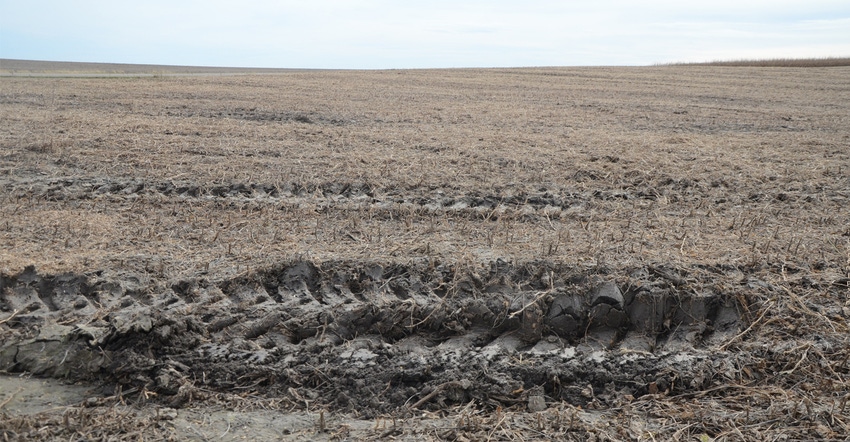September 2, 2020

This article aims to inform readers about soil compaction, how it occurs, how to avoid it and how to remedy it. The first thing I want to make clear is that I am not villainizing anyone, and I understand farmers are required to make hard decisions all the time. With that thought in mind, it is best to start with what soil compaction is.
Soil compaction occurs when the amount of pore space in the soil is decreased, and the soil is made denser. The loss of pore space can reduce water infiltration, water storage and root penetration — and lower yields depending on how severe the compaction is.
After establishing what compaction is and why a farmer would want to avoid causing compaction, let’s move to what causes compaction. Most compaction in an agricultural field occurs with equipment traffic. It is known that 70% of soil compaction occurs with the first traffic event. The weight from a vehicle causes the soil to be compressed downward along the path of the tire.
How much the soil is compacted depends on how wet the soil is and how much weight the tire bears. Water can act as a lubricant between soil aggregates, reducing friction, allowing for less downward force to be needed to compact the soil. The downward force is determined by the amount of weight that a vehicle’s axle bears. In other words, wet soils compact easier, and the risk of compaction increases with increased equipment weight.
Next is how to avoid compacting soil. Try to avoid trafficking soil when it is wet, as this will cause more severe compaction. This sounds simple, but it is not an easy thing to do — especially when a crop needs to be planted or harvested, and the clock is ticking down.
This leads us to the next item: Increasing the amount of organic matter in the soil can increase soil’s ability to resist compaction. Soil organic matter acts as glue to hold soil aggregates together. The more organic matter your soil has, the more stable your soil aggregates will be, and the more weight it can bear before compaction starts occurring.
Last is how to remedy soil compaction. Cover crops are a tool that can be used to remedy soil compaction while also building soil organic matter. There are multispecies cover crop mixes that have been created to help break up restrictive layers in the soils.
In the case of severe compaction that has created deep ruts, tillage may have to be done. When conducting tillage to remedy compaction, it's important that the soil be dry, and it is recommended that the soil be close to permanent wilting point.
When you till wet soil, you increase the amount of compaction instead of decreasing compaction. If you are tilling in the fall, consider planting a cover crop to help reduce soil loss.
To avoid compaction, avoid field operations when the soil is saturated. The more weight equipment is bearing, the more the soil will be compacted. Cover crops can help break up compaction and build organic matter. Increasing organic matter will increase your soil’s resistance to compaction. If you must till to break up compaction, till when the soil is dry.
Sindelar is a Nebraska Extension educator.
You May Also Like




